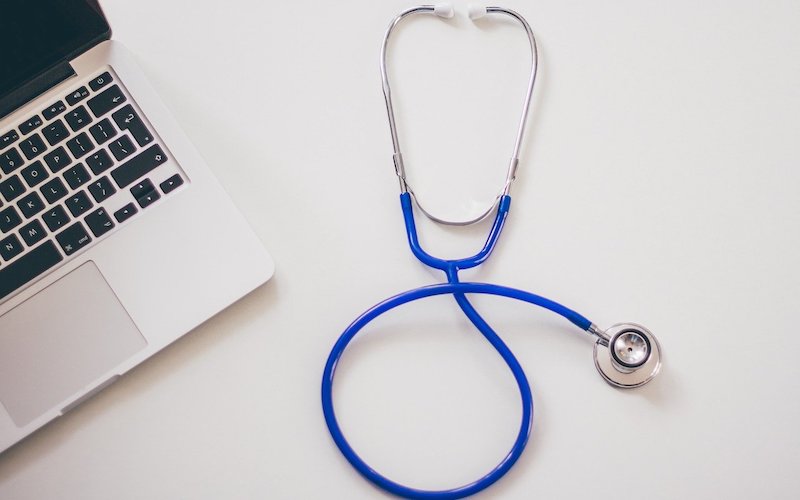Healthcare systems all over the world are going through unprecedented change due to the COVID-19 worldwide crisis. Not only have hospitals been restructured to solely fight the virus, but some have also even had to shut down because the infection spread to the staff.
For the laypeople who are staying indoors, this makes for a new kind of insecurity: What do they do if they need a doctor? Fortunately, this question is no longer unanswered. Technology today is advanced enough to help us with some of our medical problems without needing to meet a doctor in person. Telehealth has been fulfilling our healthcare requirements, especially through the global pandemic.
Related: These Startups are Helping in the Fight Against Coronavirus
Telehealth and Big Data
Telehealth is essentially the provision of healthcare services through remote technologies. Your doctor examines your symptoms online, either via video calls or through text messages, and prescribes treatment accordingly. Big data steps in here, collecting all of this information and using it to improve telehealth services. With enough data and analysis of it, doctors can provide better and faster treatment.
Faster and Better Diagnosis
While many cities and towns remain shut around the world, remote and rural areas are finding it even harder to access essential services. The process of meeting a doctor and getting a diagnosis, even without a lockdown, is a long one for residents of remote areas. Here’s where big data plays a part. Health data is being constantly collected and analyzed — from digital health devices like digital step-counters to sleep management apps. The data gleaned from these various sources can assist doctors in putting together a holistic picture of one’s healthcare, based on trends and patterns.
Additionally, big data allows for the use of contextual data that can help doctors diagnose conditions. Big data as utilized through telehealth helps cut short the time of diagnosis, as well as allowing for a more accurate diagnosis. In this way, big data — used in conjunction with whatever limited patient information is available electronically — can assist doctors in diagnosing conditions even without an in-person meet.
Easier Access to Treatment
With the potential for virtual doctor-patient appointments, the costs of healthcare are significantly reduced. A study in an article on Top Registered Nurse states, “patients can save as much as $19 to $121 per telehealth visit while increasing the number of patients who access care and reducing the need for follow-up care. Essentially, a video call with a medical professional about an unexpected but time-sensitive issue lets patients get the care they need as quickly as possible without having to pay emergency premiums.” The reduced cost means that many people who could not afford the treatment now can.
The ease of access to patient care is especially useful during this time when going to a hospital is not always possible. Additionally, with many individuals out of work, the reduced cost of healthcare through telehealth comes as a boon for most. Making healthcare accessible is one of the greatest challenges faced by many countries around the world, even when we aren’t in the midst of a global crisis. Telehealth powered by big data makes for one viable solution, as increasingly realized during this time. The use of telehealth for delivering healthcare services can be continued past the pandemic, so as to make healthcare more accessible to those in remote areas, as well as those who cannot always afford to make in-person visits. Big-data powered apps are also an accessible way to immediately check one’s symptoms, prior to getting expert advice through virtual consultations. In this way, telehealth is worth investing in even after COVID-19.
Improved Mental Health Services
In the middle of a pandemic, we must not forget the importance of maintaining our mental health — perhaps even more so than our physical health. The World Health Organization (WHO) notes that elevated levels of stress and anxiety have been the main psychological impact of the pandemic so far, but as new measures like extended quarantines and lockdowns are introduced, the WHO expects to see a rise in levels of loneliness, depression, and even self-harm. Thus, prioritizing mental health is key during this time. In this regard, telehealth has already been useful for many. From mental health professionals offering free sessions online to governments creating helplines, telehealth is giving mental health the attention it deserves.
Online sessions with therapists have made therapy more accessible to many. Online capabilities also contributed to an increase in the availability of mental health professionals since those engaging in telehealth are no longer bound by geography. With telehealth, people can talk to therapists from other states, and countries too.
Big data can become a preventive measure too, in the case of mental health. By drawing upon larger sets of data, researchers can better identify patterns in patients that are otherwise hard to recognize. If utilized correctly, big data can also then identify risk factors for mental illness such as genetic proclivity, chronic conditions, stressful life situations, and more through drawing upon vast databases of health-related data. Alongside identified patterns, this allows professionals to try to prevent the onset of mental illness. One study, in fact, used electronic records following outpatient visits to create a model to predict suicide and death attempts. This model was found to outperform existing suicide prediction tools. While the possibilities of big data in mental telehealth are still being realized, case studies like this have shown its wide-scale potential.
Telehealth: One Way Forward
In conclusion, it is time we appreciate telehealth for helping us through the mammoth crisis of COVID-19. As big data continues to transform, reinvent, and reform businesses, it will be interesting to watch its role in healthcare. Given that healthcare systems are becoming more and more dependent on technology, telehealth is not just the present but also the future.
From apps to websites to video call facilities, if we want to make healthcare available to all, this might be our best bet. As this crisis has shown, doctors will continue to strive to help their patients and sometimes, discover the many benefits of newer healthcare capabilities like telehealth in the process. COVID-19 might have kept us confined to our homes, but telehealth has proven that social distancing doesn’t mean inaccessibility.










